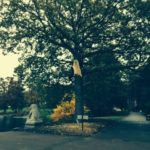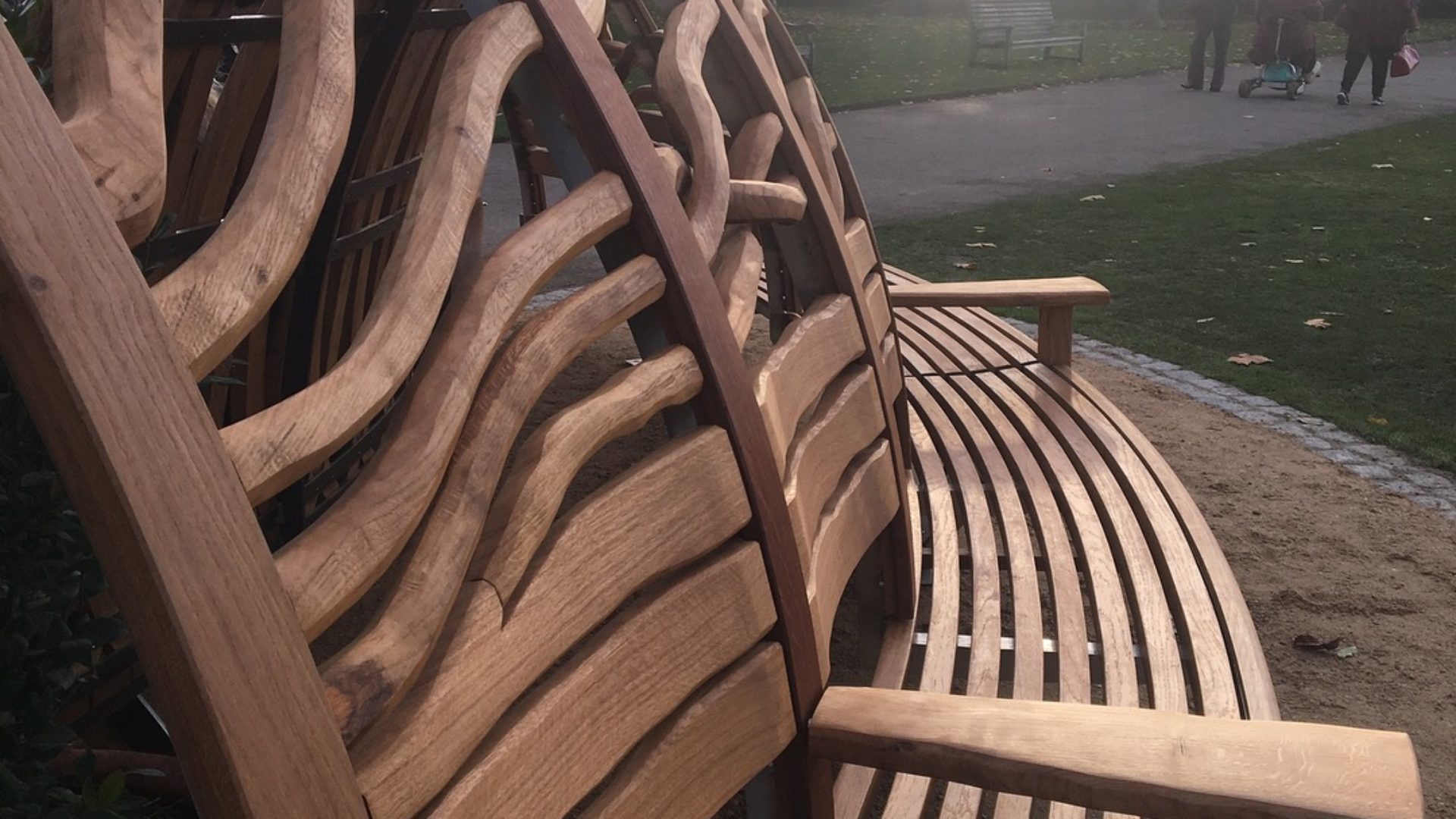
The beautifully detailed Remembrance and Hope bench at Kew gardens.
I have written before about Gaze Burvill’s furniture on this blog (What makes a good chair?), but after attending the unveiling of their new handmade bench at Kew Gardens a couple of weeks ago, I was moved to write again.
Over one hundred years ago, a soldier picked up some acorns and put them in his pocket. He was in France, about 30km from the Belgian border. The acorns were from the battlefield at Verdun, one of the bloodiest battles of the First World War, with over 700,000 casualties. The soldier survived and returned with his acorns to the UK. They were handed over to Kew and in 1919, an oak tree was planted out in the grounds to commemorate the fallen.

The damaged Verdun Oak at Kew gardens (photo courtesy of www.familyaffairsandothermatters.com)
In the St Jude storm in late October 2013, the tree was badly damaged, and the decision was taken to fell it. Simon Burvill takes up the story: “Four years ago in early 2014, I received a call from Tony Kirkham, Head of Arboretum at Kew, to tell me that he’d had an idea for a challenging yet inspiring project… …Tony asked me if we at Gaze Burvill could create a commemorative piece from the wood of the Oak tree in time for the centenary of the end of the War. Tony is one of the world’s leading tree experts, and responsible for all 14,000 of Kew’s trees. He knew of the difficulty of this project – this tree was young for an oak and grew in parkland, not forested and therefore unlikely to produce prime quality wood. We had only four years until the Centenary event, to mill and dry the wood, followed by the designing and building of the seat, meaning timing would be tight. However, I felt honoured to be part of such a unique project, so I said yes…”
I called in to Gaze Burvill’s HQ and workshops in late 2014, where Simon told me about the project. When they were milling the timber, the saw had snagged on some nails deep in the timber and broken the blade. The position of the nails dated them to about 1947-48. That was the end of the milling, although most of the timber had been planked. Simon showed me the remaining ‘wedge’ (with the nail stains) which was made into a simple bench to commemorate Verdun and unveiled at Kew 100 years to the day after the end of the battle.

The concave side of the bench has a design based on the barbed-wire loops of the front in the battlefield.
The main bench was designed and beautifully made by Gaze Burvill and a site was chosen. It was to be curved, with the concave or more reflective and introverted side facing the war memorial at Kew. The more outward looking convex side was to face out over the gardens, looking over the water and trees.

The more outward-looking convex side faces the lake and grounds of Kew Gardens.

There is a delightful space (small enough for a child) between the bench backs.
Apart from being a very poignant story, this also has something else. Landscape projects work best when they have a clear link with the land on which they sit – when they are (quite literally in this case) – rooted into the landscape. But this has another dimension: the back story arches over history, from the battlefields of France to the peace of Kew, and embedded within it there is an idea of the healing power of nature and by extension, horticulture. This concept is already deeply rooted in our collective psyche through the icon of the poppy, which flourished in abundance on the battlefields in the summer following the war. Not all projects have such a fantastic story, but the combination of link to the site and some deeper story of the client is a powerful one. For more exploration of this idea of landscape design rooted in the site, read a post I did a few years ago, called: ‘Why are landscape designers different?‘

